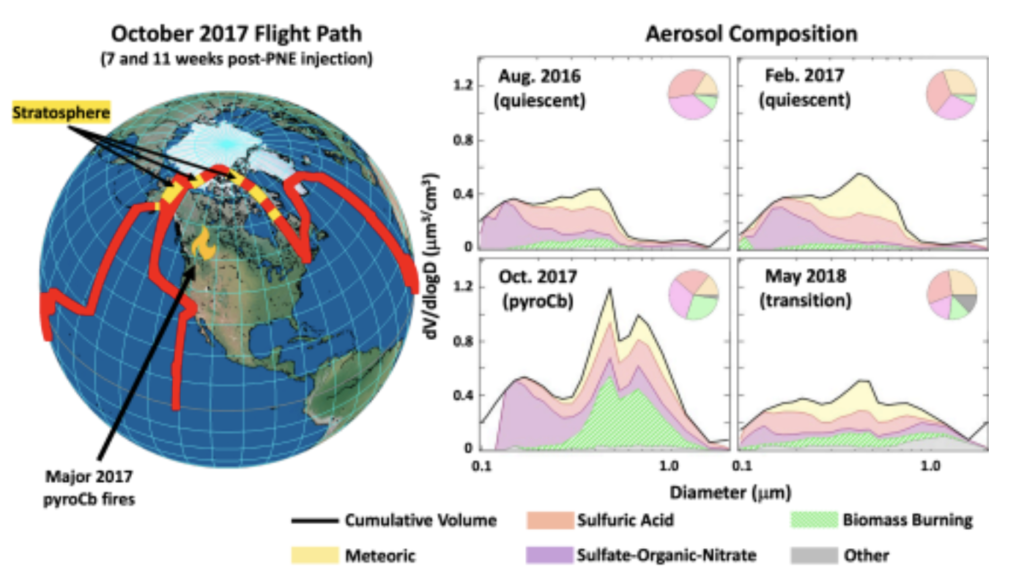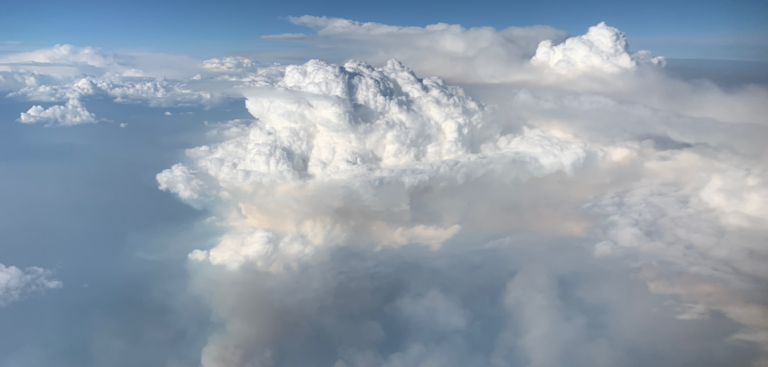A team of atmospheric scientists led by the US National Oceanic and Atmospheric Administration (NOAA) has demonstrated how large vertical plumes of wildfire smoke have a major long-term impact on the stratosphere and climate.
Pyrocumulonimbus (pyroCb) are generated when the intense heat of a wildfire triggers a huge thunderstorm that carries smoke into the stratosphere, 8-11km above the surface. In 2017, the flight path of NASA’s Atmospheric Tomography Mission (ATom) intersected with smoke from the largest pyroCb event observed in the satellite era to that date over the Pacific Northwest. The smoke injection was so large that remote sensing instruments around the globe monitored it for more than eight months. Measurements showed that it and several additional northern hemisphere pyroCb events that year dominated contributions of black carbon and organic carbon to the lower stratosphere, the net effect of which cooled the planet.
Joshua Schwarz, a research physicist in NOAA’s Chemical Sciences Laboratory and study co-author, said, “These fire clouds are growing larger and more frequent – witness record-breaking events in 2017, 2019 and 2020. Their recent impacts on the stratosphere have been impressive. Now we’ve learned how to track those impacts over longer time periods than we previously recognized were significant. This means we’ll now be able to track changes in their impacts as the climate evolves.”
Scientists are interested in learning more about pyroCbs because their smoke lingers in the atmosphere longer than that from typical fires, affecting climate on a different scale. Schwarz added that the findings also provide insights into the behavior of aerosols from volcanoes, aviation or potential future solar geoengineering efforts.
Measurements of these clouds have been extremely limited to date due to their episodic nature and the logistical challenges of getting scientific instruments airborne and into the smoke on short notice. As a result, the distribution and duration of smoke from these events are poorly known, as is the impact on climate and stratospheric aerosol chemistry, including the ozone layer.
One surprising finding was the discovery of an extremely thick coating on black carbon particles generated by wildfires. “We spent weeks analyzing individual particle data to verify that this was a real signal, and not generated by some fault in the data processing,” said former CIRES scientist and lead author Joe Katich, who now works for Ball Aerospace.

A second NOAA-NASA airborne mission, FIREX-AQ, provided direct sampling of hours-old pyroCb smoke from the Williams Flats fire in 2019. Analysis of black carbon from that fire gave them more confidence in their conclusions drawn from the 2017 smoke.
The thick coating of black carbon, along with its size and mass, was a remarkably stable feature of pyroCb smoke that researchers realized could be used to ‘fingerprint’ these particles in the lower stratosphere. Using these fingerprints, they re-examined data from 12 airborne mission data sets going back to 2006 in both hemispheres to estimate long-term pyroCb influences on the lower stratosphere in our recent climate.
The researchers found that even in those years with relatively few of these pyroCbs before more active fire seasons starting in 2020, the impact of smoke was significant, contributing roughly 20% of all stratospheric black carbon and organic carbon in the lower stratosphere in the previous decade.
“This gave us a reasonable estimate representing the period before things really started lighting up,” Schwarz said. “We now recognize pyroCb’s longer-term influence on the stratosphere. It’s not just an important blip but a steady-state influence that needs to be accounted for.”
Katich added, “This is a major win for understanding the stratosphere, which people have a rapidly growing interest in. PyroCb contributes more to the stratospheric makeup than we thought, acts in different ways than we thought and sticks around longer than we thought. This finding is important on its own but will also help us understand the long-term implications of solar geoengineering with aerosols.”
To view the full results published in the journal Science, click here.



